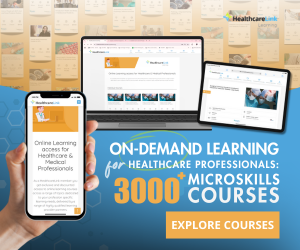Anaesthesia | Pain | Step I: NSAIDS Drugs and Mechanisms, Side Effects and Contraindications
Step I: NSAIDS Drugs and Mechanisms, Side Effects and Contraindications
Session Overview
Description
Non-Steroidal Anti-Inflammatory Drugs (NSAIDs) are commonly prescribed to relieve acute and postoperative pain. It is therefore important to understand the mechanism of their action, side effects and complications of administration.
Learning Objectives
By the end of this session you will be able to:
- Describe the mode of action common to all NSAID drugs
- Explain the clinical uses for NSAIDs
- Describe the common side effects of NSAIDs due to their action on COX
- Recognize the contraindications to using NSAIDs in clinical practice
- Distinguish between COX1 and COX2 inhibition side effects and state the indications for their use
Prerequisites
Before commencing this session you should:
- Module 02/Postoperative and Recovery Care/Postoperative care/Postoperative analgesia: basic principles and analgesic ladder (001-0231)
- Module 05a/Pharmacological Targets/Peripheral nervous system (001-0499)
- Module 05a/Pharmacological Targets/Ceentral nervous system (001-0500)
- Module 07c/Systematic Pharmacology/Analgesics/Simple Analgesia: aspirin and paracetamol (001-0774)
- Module 07c/Systematic Pharmacology/Analgesics/Non-Steroidal Anti-inflammatory Drugs (NSAIDs) (001-0775)
Non-Steroidal Anti-Inflammatory Drugs (NSAIDs) are commonly used to treat mild and moderate acute pain. Depending on the type of pain, they can be even more effective than a 10 mg IM dose of morphine.
Unfortunately there is a myriad of side-effects and contraindications to their use. This limits their appropriateness for postoperative use. The majority of these side effects are directly related to their action at the cyclooxygenase (COX) group of enzymes.
Fig 1 Shows the COX pathway
In this session you will review some of the history and pharmacology of the drug group, to enable you to develop a deep understanding of NSAIDs that can easily be translated into clinical practice.
- Anaesthesia | Obstetrics | Body Composition and Gr...
- Posted By eIntegrity Healthcare e-Learning
- Posted Date: 2024-11-28
- Location:Online
- The session starts with an introduction to the concept of growth and development, and why this is important for paediatric anaesthesia pharmacology. This includes an important outline of what is ‘normal’. A key point of this session is for th
- Anaesthesia | Obstetrics | Anaesthesia in Early Pr...
- Posted By eIntegrity Healthcare e-Learning
- Posted Date: 2024-11-28
- Location:Online
- This session will describe the common risks to both mother and fetus that require surgery in early pregnancy. It will support the recognition of the potential pitfalls of anaesthetizing women in early pregnancy to ensure the safety of both the mother and
- Anaesthesia | Obstetrics | Breastfeeding and Anaes...
- Posted By eIntegrity Healthcare e-Learning
- Posted Date: 2024-11-28
- Location:Online
- This sessionprovides information for an anaesthetist to give to mothers about the benefits of breastfeeding, and the safety of drugs commonly prescribed in the perioperative period.
- Anaesthesia | Obstetrics | The Obese Mother
- Posted By eIntegrity Healthcare e-Learning
- Posted Date: 2024-11-28
- Location:Online
- The anaesthetic considerations and management of the obese parturient.
- Anaesthesia | Obstetrics | Venous Thromboembolism ...
- Posted By eIntegrity Healthcare e-Learning
- Posted Date: 2024-11-28
- Location:Online
- This session discusses the incidence, aetiology, pathophysiology, risk factors, prophylaxis and anaesthetic management of VTE in pregnancy.


